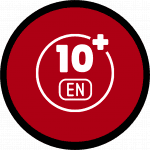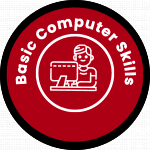Singapore WSQ WordPress Training Course
Learn WSQ WordPress Training Course in Singapore

Master WordPress with our WSQ-accredited training course in Singapore! Learn website creation, customization, and SEO optimization. Gain hands-on experience and boost your digital skills. Enroll today to enhance your career in web development!
Days: 2 Days
Duration: 14 Hours
Timings: 9:30 AM – 5:30 PM
10 Anson Road, 26-08A International Plaza, Singapore 079903
SSG Course Details
WordPress Training Course
TGS-2022016863
Who Should Attend This WSQ WordPress Training Course
This WSQ WordPress Training Course is ideal for entrepreneurs, marketers, web designers, and beginners seeking to build, manage, and optimize websites. Perfect for professionals aiming to enhance digital skills and create dynamic, SEO-friendly WordPress sites.

Business professionals

Marketing Professionals

Student
Entry Requirements



WSQ WordPress Training Course in Singapore
WSQ WordPress Training Course Singapore will teach you everything you need to know to create, manage, and maintain your WordPress website.
Our WSQ WordPress course training is designed for beginners and intermediate WordPress users. No coding experience is required! We provide a step-by-step guide with practical examples, so you can easily follow along and apply what you’ve learned to your website.
Our course is self-paced, so you can take your time and learn at your own speed. You’ll have access to our support team for any questions you may have along the way.
By the end of the course, you’ll be able to confidently manage your WordPress website and make it work for you.
What You Will Learn
- Website Customization: Themes, plugins, and page builders like Elementor.
- Content Management: Creating and managing posts, pages, and media.
- SEO & Performance Optimization: Learn how to rank higher on Google.
- Security & Maintenance: Protect your website from threats and keep it updated.
- E-Commerce (WooCommerce): Set up an online store and accept payments.
WSQ WordPress Training Course Outline
LO1. Create a plan for the components of a content management system (CMS) using WordPress
– A1: Implement content management policies, guidelines and permissions on content management
– K1: Content management policies, guidelines and permissions on content management
– K4: Creation and curation of web content guidelines
- Define the term Content Management System (CMS)
- Describe the features and functions of CMS Website software
- Explain the advantages and disadvantages of different hosting options
- Describe what success could look like when using a CMS website
- Identify keywords and/or keyword phrases to be used on each page of a website
- Register with a hosting provider with a suitable domain name in relation to keywords and/or keyword phrases identified
- Identify the website template to be used for a website
- Plan the content and layout needed for each page on a website
LO2. Use WordPress to create a website
⎯ A2: Post and update content on content management systems
⎯ K2: Web content for deployment
⎯ K5: Web content and platform management systems
- Customise a website template in relation to a plan
- Use planned content to populate a website template
- Use programming and development techniques to add features and enhance a website
- Include keywords and/or keyword phrases in website meta-tags
- Include a blog in a website implementation
- Store and retrieve files in line with local guidelines and conventions where available
- Include links to Social Networking Sites in relation to a plan
- Include buttons to share content on a website
- Use testing methods to check that all elements and features of a website are working
- Register a website with search engines
- Explain how laws, guidelines and constraints affect the content and use of websites
- Explain when and why to use different file types for saving content
LO3. Measure and improve the return on investment (ROI) of a website
– A5: Report on metrics to measure performance of content management systems
– K6: Types of performance metrics of content management systems
- explain the importance of measuring traffic to a website
- identify methods of measuring the return on investment (ROI) of a website
- use analytic tools to monitor the traffic to a website
- define the term ‘bounce rate’
- explain the impact of bounce rate on a website
- identify improvements to a website based on analytical information.
LO4. Create structures and styles and use them to produce websites
– A4: Maintain awareness of market offerings on content management systems
– K8: Types of market offerings on content management systems
- determine what website content and layout will be needed for each page and for the site
- plan and create web page templates to layout content
- select and use website features and structures to enhance website navigation and functionality
- create, select and use styles to enhance website consistency and readability
- provide guidance on laws, guidelines and constraints that affect the content and use of websites
- explain what access issues may need to be taken into account
- explain when and why to use different file types for saving content
- store and retrieve files effectively, in line with local guidelines and conventions where available
LO5. Select and use website software tools and features to develop multiple page websites with multimedia and interactive features
⎯ A6: Recommend the adoption of appropriate plug-ins to manage and maintain the
organisation’s web properties and assets
⎯ K3: Organisation’s web properties and assets
⎯ K9: Types of plug-ins to manage the organisation’s web properties and assets
- prepare content for web pages so that it is ready for editing and formatting
- organise and combine information needed for web pages in line with any copyright constraints, including across different software
- select and use appropriate editing and formatting techniques to aid meaning
- select and use appropriate programming and development techniques to add features and enhance websites
- select and use file formats that make information easier to download
- check web pages meet needs, using IT tools and making corrections as necessary
LO6. Publish and test multiple page websites with multimedia and interactive features
⎯ A3: Maintain web properties and assets to uphold standards on user experience
⎯ A7: Generate ideas to improve customer and visitor experience on web properties and assets
⎯ K7: Customer and visitor experience on web properties and assets
- select and use appropriate testing methods to check that all elements and features of complex websites are working as planned
- identify any quality problems with websites and explain how to respond to them
- select and use an appropriate programme to upload and publish the website and make sure that it will download efficiently
- respond appropriately to quality problems with websites to ensure outcomes are fit for purpose
Training fee:
*Course fee before funding: $740.00/pax + 9% GST
Funding: (8% GST included)
**The funding amount mentioned is indicative and will be confirmed upon registration.
|
Course Fee Subsidies for SMEs |
SINGAPORE CITIZENS AND PRS ≥ 21 |
|
|
70% of Course Fees, Capped at $25/hr |
||
|
WSQ Deductible: $518.00 Payable: $288.60 (including GST) |
||
|
Passing Exam & Full Attendance required |
||
|
Course Fee Subsidies for Non-SMEs |
SINGAPORE CITIZENS ≥ 40 |
SINGAPORE CITIZENS < 40 AND PRS |
|
70% of Course Fees, Capped at $25/hr |
50% of Course Fees, Capped at $17/hr |
|
|
WSQ Deductible: $518.00 Payable: $288.60 (including GST) |
WSQ deductible: $370.00 Payable $436.60 (including GST) |
|
|
Passing Exam & Full Attendance required |
||
|
Course Fee Subsidies for Self-sponsored Individuals |
SINGAPORE CITIZENS ≥ 40 |
21⩽SINGAPORE CITIZENS < 40 AND 21 ⩽PRS |
|
70% of Course Fees, Capped at $25/hr |
50% of Course Fees, Capped at $17/hr |
|
|
WSQ Deductible: $518.00 Payable: $288.60 (including GST) (Can be offset by Skillsfuture credits if have) |
WSQ deductible: $370.00 Payable $436.60 (including GST) (Can be offset by Skillsfuture credits if have) |
|
|
Passing Exam & Full Attendance required |
||
Kindly note that you are required to achieve a minimum of 75% attendance and be certified competent in all the assessment components. Should you fail to meet the attendance/assessment requirements and/or terms and conditions of SSG's funding, you will not be eligible for the course fee funding and will have to bear the full course fees.
*UTAP Funding (For the course attended by 30 Mar 2024)
If you’re an NTUC union member (and paid-up union membership before the course starts, throughout the whole course duration and at the point of the claim), after the course, you can claim a 50% *unfunded course fee, up to $250 each year.
NTUC members aged 40 and above can enjoy higher funding support up to $500 per individual each year, capped at 50% of unfunded course fees, for courses attended between 1 July 2020 to 31 December 2025.
Discount policy:
- 3 pax from a same group: 5% discount for each person
- 4 pax from a same group: 10% discount for each person
Assessment Plan:
- Practical Project (110 minutes): build a mock website on WordPress given the requirement
- Oral Questioning (10 minutes): theory questions via 1-1 oral interview